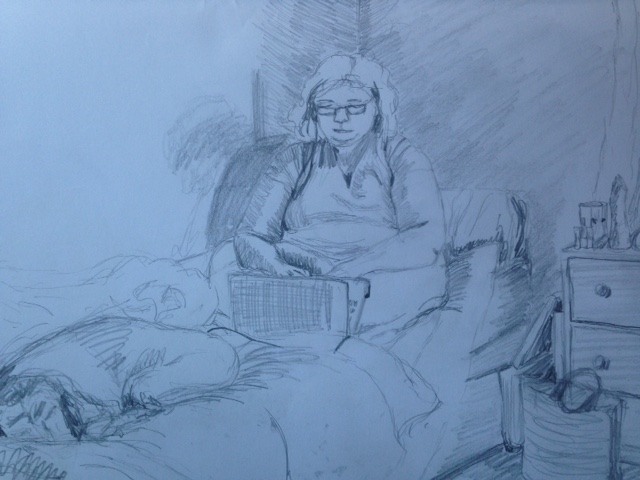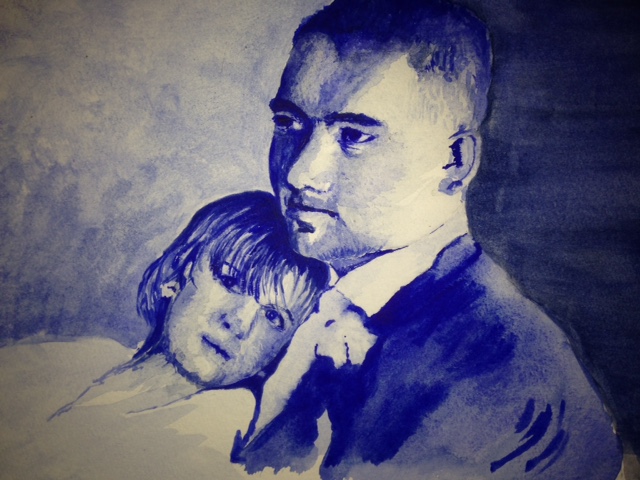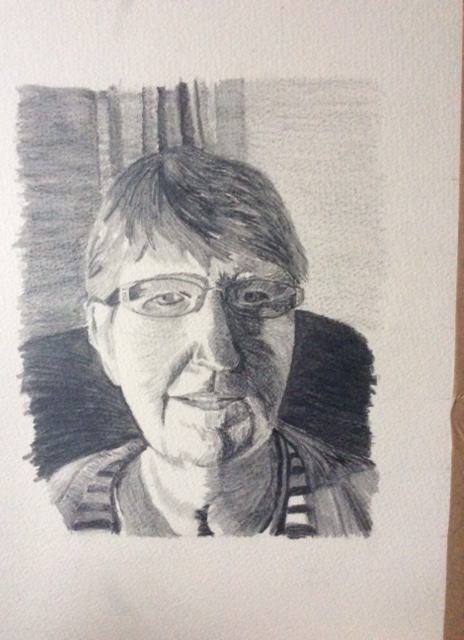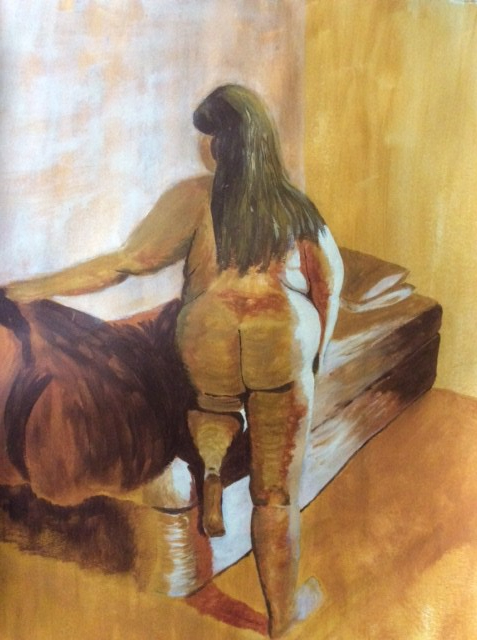For this study I used another photograph to convey character through facial expression. Having found it so difficult in achieving a child’s face in my last exercise, I decided to use a child’s photo and work it in acrylics.
In my acrylic portraits so far I have used the following colours:
Flesh Ochre, Titanium White, Carmine red, Vermillion, Yellow Ochre, Burnt Umber, Cerulean and Phthalo Blues and I continued with these.
I wanted to achieve a smoothness of the skin whilst maintaining the young age of the child. I used acrylic retarder so I could blend colours in situ but I didn’t start so well (forgot to take photos of progress too) and at the end of day 1 I was ready to jack it in!
I think this was because I had under painted in the hues and tones that I could see in the photo but again I was stressed over it becoming adult- like and I couldn’t think of how to bring the curves and gentleness of the face to the fore. I put it away to dry.
Another day! I’d had a chance to think about how to blend all the colours to give an appearance of smoothness. With baited breath I used some Flesh Ochre mixed with retarder to give an opaqueness to the colour and then painted over the face – it had the effect I was after.
This is how I have left it until tomorrow – one photo is with flash and the more yellow one is without:
Well tomorrow is here and I’m going to start by adding the background as I feel it may influence how I finish the portrait. I’ve chosen a green gradation and this has enabled me to pick up shadow under the face and to improve the accuracy of the hair colour as well as picking out tiny features that weren’t really evident before.

I feel that this is a successful work in that it captures the inner feeling of the child in addition to giving movement to the face and showing how the muscles move to convey smiling and joy. Overall, I’m really pleased with this and so far would say this is my best attempt at a portrait. Technically, this is much improved on my other attempts: by trial and error, I’ve discovered how to mix and handle the paint to achieve the movement in the face while still keeping the smoothness of the skin to portray the young age of the child.


























